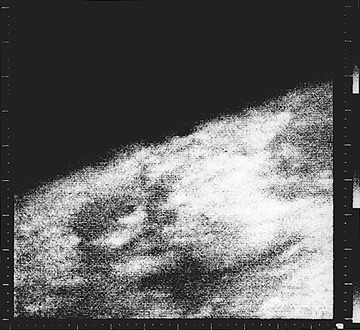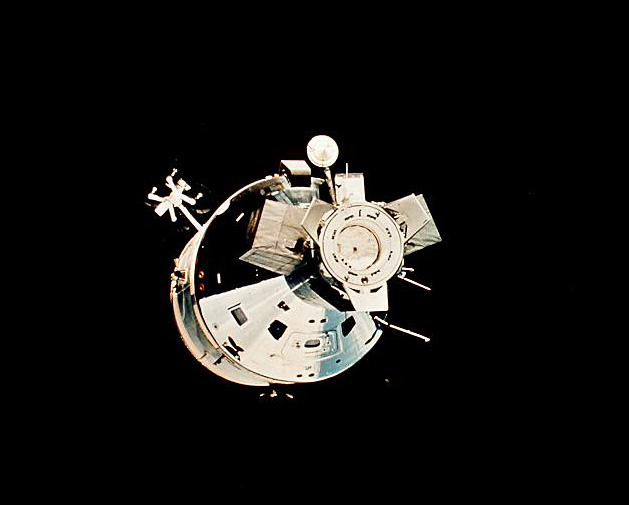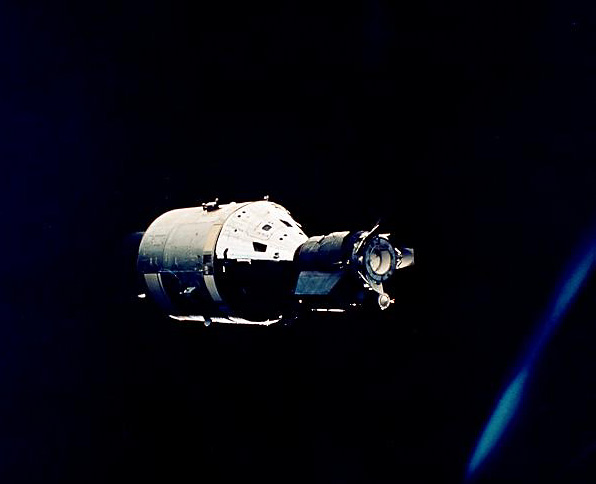If you are not already a subscriber, you are welcome to enter your email address here to sign up to receive the Space History newsletter on a daily basis. Under no circumstances will we release your legitimate email address entered here to outside persons or organizations, and it will only be used for mailing the specific information you have requested.
| Enter your email address here: |
Unsubscribe instructions are included in every newsletter issue in case you decide you no longer wish to receive it.
Note: We record the IP address from which subscriptions are entered to help prevent SPAM abuses.
Race To Space
Someone will win the prize...
... but at what cost?
Visit RaceToSpaceProject.com
to find out more!
1890
A. Charlois discovered asteroid #294 Felicia.
1914
Born, Rudolf Karl Hans Schlidt, rocket engineer, German expert in guided missles during World War II, member of the German Rocket Team in the US after the war, essential project manager of the first US satellite, Explorer 1
ref: translate.google.com
1916
At Seattle, Washington, timber merchant William Boeing incorporated Pacific Aero Products, a firm later renamed to The Boeing Company.
ref: www.thisdayinaviation.com
1929
The first airport hotel opened, The Dearborn Inn at Henry Ford's airport at Dearborn, Michigan.
ref: en.wikipedia.org
1933
Wiley Post began the first solo flight around the world, a trip lasting more than seven days, ending on 22 July.
ref: www.history.com
1943
Born, Jocelyn Burnell, Northern Irish astrophysicist, discovered the first radio pulsars
ref: en.wikipedia.org
1950
K. Reinmuth discovered asteroid #1750 Eckert.
1954
The first flight of the Boeing 367-80 took place, the original prototype of the Boeing 707 which became the first American jet passenger airliner.
ref: www.wired.com
1963
NASA's Manned Spaceflight Center received 271 Apollo astronaut program applications. Seventy-one were military pilots (one Army, 34 Navy, 26 Air Force, 10 Marines). Of the 200 civilians applying, three were women.
ref: www.hq.nasa.gov
1965 01:00:57 GMT
NASA's Mariner 4 became the first spacecraft to successfully fly by Mars, passing as close as 9,846 kilometers (6,118 miles), taking the first close-up photographs of another planet.

Mariner 4 image, the first close-up image ever taken of Mars
Source: NSSDC Image Catalog: Mars - Mariner 4
Mariner 4, launched 28 November 1964, was the first spacecraft to get a close look at Mars. Flying as close as 9,846 kilometers (6,118 miles) on 15 July 1965, Mariner 4 revealed Mars to have a cratered, rust-colored surface, with signs on some parts of the planet that liquid water had once etched its way into the soil. In addition to various field and particle sensors and detectors, the spacecraft had a television camera, which took 22 television pictures covering about 1% of the planet. Initially stored on a 4-track tape recorder, these pictures took four days to transmit to Earth.
Mariner 4, expected to survive something more than the eight months to Mars encounter, actually lasted about three years in solar orbit, continuing long-term studies of the solar wind environment. Mariner 4 returned to the vicinity of Earth in 1967, when engineers then decided to use the aging craft for a series of operational and telemetry tests to improve their knowledge of the technologies that would be needed for future interplanetary spacecraft.
Mariner 4 was well on its way to Mars when an experiment was approved to study the effect of transmitting the spacecraft's radio signal through the Martian atmosphere just before the spacecraft disappeared behind the planet. This experiment would reveal much about the Martian atmosphere. In order to perform the experiment, the spacecraft's computer had to be reprogrammed from Earth. This engineering feat, pioneered on Mariner 4, has since been greatly refined and repeated numerous times in later missions, both for enhancement and salvage.
ref: nssdc.gsfc.nasa.gov
ref: nssdc.gsfc.nasa.gov
1975 12:20:00 GMT
USSR launched Soyuz 19 (Soyuz-ASTP) from Baikonur, the Soviet half of the Apollo-Soyuz Test Project, in preparation for the unprecedented international docking of their spacecraft two days later.

Soyuz 19 (Soyuz-ASTP) spacecraft as seen from the Apollo-ASTP Command Module, NASA photo
Source: NSSDCA Master Catalog
On 15 Juy 1975, the US and the USSR launched an Apollo spacecraft (Apollo-ASTP) and a Soyuz spacecraft (Soyuz 19), respectively, as a joint effort called the Apollo-Soyuz Test Project (ASTP), a post-Moon-race 'goodwill' flight to test a common docking system for space rescue. Soyuz 19, with its two man crew, had a flawless launch, and achieved an initial orbital of 220.8 by 185.07 km at the desired inclination of 51.80 degrees, with the period of the first orbit being 88.6 minutes. The Apollo was launched 7.5 hours later, with a three man crew who maneuvered their spacecraft into a proper configuration for docking with the Soyuz. The docking occurred on the third flight day, 17 July 1975. After docking, crew transfers took place, with the Apollo crew first visiting the Soyuz. Leonov was on the American side for 5 hours, 43 minutes, while Kubasov spent 4:57 in the command and docking modules. The combined Apollo-Soyuz crews conducted various mainly ceremonial activities, performed joint experiments, and presented radio and TV reports. After the joint experiments were completed, the spacecraft disengaged, and each continued its separate mission.
After being docked for nearly 44 hours, Apollo and Soyuz parted for the first time and were station-keeping at a range of 50 meters. The Apollo crew placed its craft between Soyuz and the Sun so that the diameter of the service module formed a disk which blocked out the Sun, creating an artificial solar eclipse so the Soyuz crew could take photographs of the solar corona. After this experiment Soyuz moved toward Apollo as the active ship for the second docking.
Three hours later Apollo and Soyuz undocked for the second and final time. The spacecraft were moved to a 40 meter station-keeping distance to perform an ultraviolet absorption experiment. With all the joint flight activities completed, the ships then went on their separate ways. Soyuz 19 landed safely in Kazakhstan on 21 July 1975.
See also Apollo-Soyuz Test Project Soyuz crew on Wikipedia
ref: nssdc.gsfc.nasa.gov
1975 19:50:00 GMT
NASA launched Apollo-ASTP (Apollo 18) from Cape Canaveral, Florida, the American half of the Apollo-Soyuz Test Project, in preparation for the unprecedented international docking of their spacecraft two days later.

ASTP-Apollo, NASA photo
Source: NSSDCA Master Catalog
On 15 Juy 1975, the US and the USSR launched an Apollo spacecraft (Apollo-ASTP) and a Soyuz spacecraft (Soyuz 19), respectively, as a joint effort called the Apollo-Soyuz Test Project (ASTP), a post-Moon-race 'goodwill' flight to test a common docking system for space rescue. The Soyuz was launched first, with a two man crew who placed their spacecraft into a docking orbit. The Apollo launch 7.5 hours later followed right on schedule. Despite a stowaway - a 'super Florida mosquito' - Apollo's three man crew performed a series of rendezvous maneuvers over the next day to position their spacecraft into a proper configuration for docking with the Soyuz. The docking occurred on the third flight day, 17 July 1975. After docking, crew members rotated between the two spacecraft, with the Apollo crew first visiting the Soyuz. Stafford spent 7 hours, 10 minutes aboard Soyuz, Brand 6:30, and Slayton 1:35. The combined Apollo-Soyuz crews conducted various mainly ceremonial activities, performed joint experiments, and presented radio and TV reports. After the joint experiments were completed, the spacecraft disengaged, and each continued its separate mission.
After being docked nearly 44 hours, Apollo and Soyuz parted for the first time and were station-keeping at a range of 50 meters. The Apollo crew placed their craft between Soyuz and the Sun to create an artificial solar eclipse, as viewed from Soyuz, permitting photography of the solar corona. After the experiment, Soyuz moved toward Apollo as the active ship for the second docking.
Three hours later, Apollo and Soyuz undocked for the second and final time. The spacecraft moved to a 40 meter station keeping distance so that the ultraviolet absorption (UVA MA-059) experiment could be performed, an effort to more precisely determine the quantities of atomic oxygen and atomic nitrogen existing at such altitudes. Apollo, flying out of plane around Soyuz, projected monochromatic laser-like beams of light to retro-reflectors mounted on Soyuz. On the 150 meter phase of the experiment, light from a Soyuz port led to a misalignment of the spectrometer, but on the 500 meter pass, excellent data were received; on the 1,000 meter pass, satisfactory results were also obtained.
With all the joint flight activities completed, the ships went on their separate ways. On 20 July, the Apollo crew conducted Earth observations, experiments in the multipurpose furnace (MA-010), extreme ultraviolet surveying (MA-083), crystal growth (MA-085), and helium glow (MA-088). Apollo continued in orbit on 22-23 July to conduct 23 other independent experiments - including a doppler tracking experiment (MA-089) and geodynamics experiment (MA-128) designed to verify which of two techniques would be best suited for studying plate tectonics from Earth orbit.
After donning their space suits, the crew vented the command module tunnel and jettisoned the docking module. Apollo-ASTP landed in the Pacific Ocean near Hawaii at 21 deg 52′ N 162 deg 45′ W on 24 July 1975, 7.3 km from the recovery ship New Orleans, the last splashdown of an American space capsule. The docking module remained in orbit until it re-entered the Earth's atmosphere and burned up in August 1975.
The last flight of the Apollo spacecraft was marred by the fact that the crew almost perished while the capsule was descending under its parachute, due to the crew making a mistake during their preparations for re-entry that resulted in a very rough landing and the capsule filling with noxious fumes: The automatic landing sequence was not armed, and the reaction control system was left active. When the Apollo hadn't begun the parachute deployment sequence by 7,000 metres altitude, Brand hit the manual switches for the apex cover and the drogues. The manual deployment caused the CM to sway, and the reaction control system thrusters worked vigorously to counteract that motion. When the crew finally armed the automatic ELS 30 seconds later, the thruster action terminated. During that 30 seconds, the cabin was flooded with a mixture of toxic unignited propellants from the thrusters: Prior to drogue deployment, the cabin pressure relief valve had opened automatically, and in addition to drawing in fresh air, it also brought in the unwanted gases being expelled from the roll thrusters located about 0.6 meter from the relief valve. Brand manually deployed the main parachutes at about 2,700 meters despite the gas fumes in the cabin.
By the time of splashdown, the crew was nearly unconscious from the fumes. Stafford managed to get an oxygen mask over Brand's face who then began to come around. When the CM was upright in the water, Stafford opened the vent valve, and the in-rush of air dissipated the remaining fumes. The crew ended up with a two-week hospital stay in Honolulu. For Slayton, it also meant the discovery of a small lesion on his left lung, an exploratory operation indicated it was a non-malignant tumour.
The Apollo-Soyuz mission was the first mission carrying a handheld programmable pocket calculator, an HP-65. The calculator was programmed to perform several backup computations to partly stand in for the Apollo mission computer in case the latter should malfunction or cease to function altogether, neither of which occurred.
This was the final flight of an Apollo mission. The ASTP Command Module is on display at the Kennedy Space Center, Cape Canaveral, Florida.
ref: nssdc.gsfc.nasa.gov
1975 20:00:00 GMT
The crew of Apollo-ASTP discovered a mosquito "stowaway" had flown to space with them during the Apollo/Soyuz mission.
see above
1977
Born, Jessica Ulrika "Goose" Meir (at Caribou, Maine, USA), NASA astronaut (ISS 61/62, over 204d 15.25h time in spaceflight)

NASA astronaut Jessica Meir in a WB-57 high altitude flight suit, NASA photo jsc2016e165336 (11 October 2016)
Source: NASA Johnson
ref: en.wikipedia.org
1980 02:22:00 GMT
The US Air Force launched AMS 5 from Vandenberg, California, a Defense Meteorological Satellite Program spacecraft destroyed by poorly designed connectors between the second and third stages that ripped the wiring out of the spacecraft.
ref: space.skyrocket.de
1991
During the 5h 56m Mir EO-9-3 EVA, Mir cosmonauts Anatoly Artsebarsky and Sergei Krikalev began the Sofora girder construction and installed the Sofora mounting platform.
ref: en.wikipedia.org
2000 12:00:00 GMT
A Kosmos-3M launched from Plesetsk carried the Italian Space Agency MITA microsatellite (NINA particle detector, experimental attitude control system), Germany's CHAMP geophysics research satellite, and Germany's Rubin technology microsatellite to orbit.
ref: nssdc.gsfc.nasa.gov
2001 03:07:00 GMT
During the 5h 56m STS-104-1 EVA, astronauts Gernhardt and Reilly removed Quest airlock module thermal covers, installed handrails and oxygen and nitrogen tanks. The ISS RMS docked Quest to Unity, the crew returned just over an hour after bolting it down.
ref: www.nasa.gov
2004 10:02:00 GMT
NASA launched the Aura satellite from Vandenburg, California, to study atmosphere dynamics and chemistry.
ref: nssdc.gsfc.nasa.gov
We are going to run out of oil!
Visit SpacePowerNow.org
to help fix the problem.
SpacePowerNow.org - For Human Survival
Please help support our efforts by shopping from our sponsors.
This newsletter and its contents are Copyright © 2006-2025 by The L5 Development Group. All rights reserved. - Publication, in part or in whole, requires previous written permission. - Academic or personal-use citations must refer to http://L5Development.com as their source. Thank you for your cooperation.
Space History Department
Resources
The L5 Development Group Home Page
The L5 Development Group Keyword Access System
Space History for July 15 /
Webmaster /
Script last modified August 23, 2018 @ 6:05 am
Copyright © 2006-2025 by The L5 Development Group. All rights reserved.
Hosted by FKEinternet




